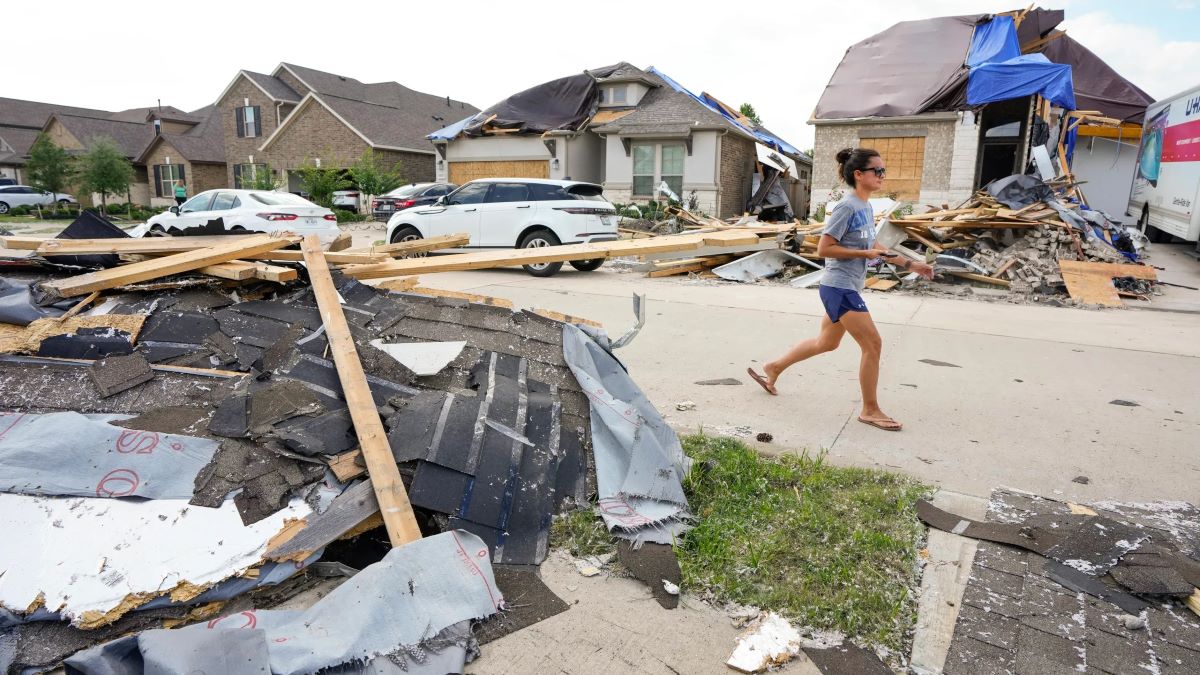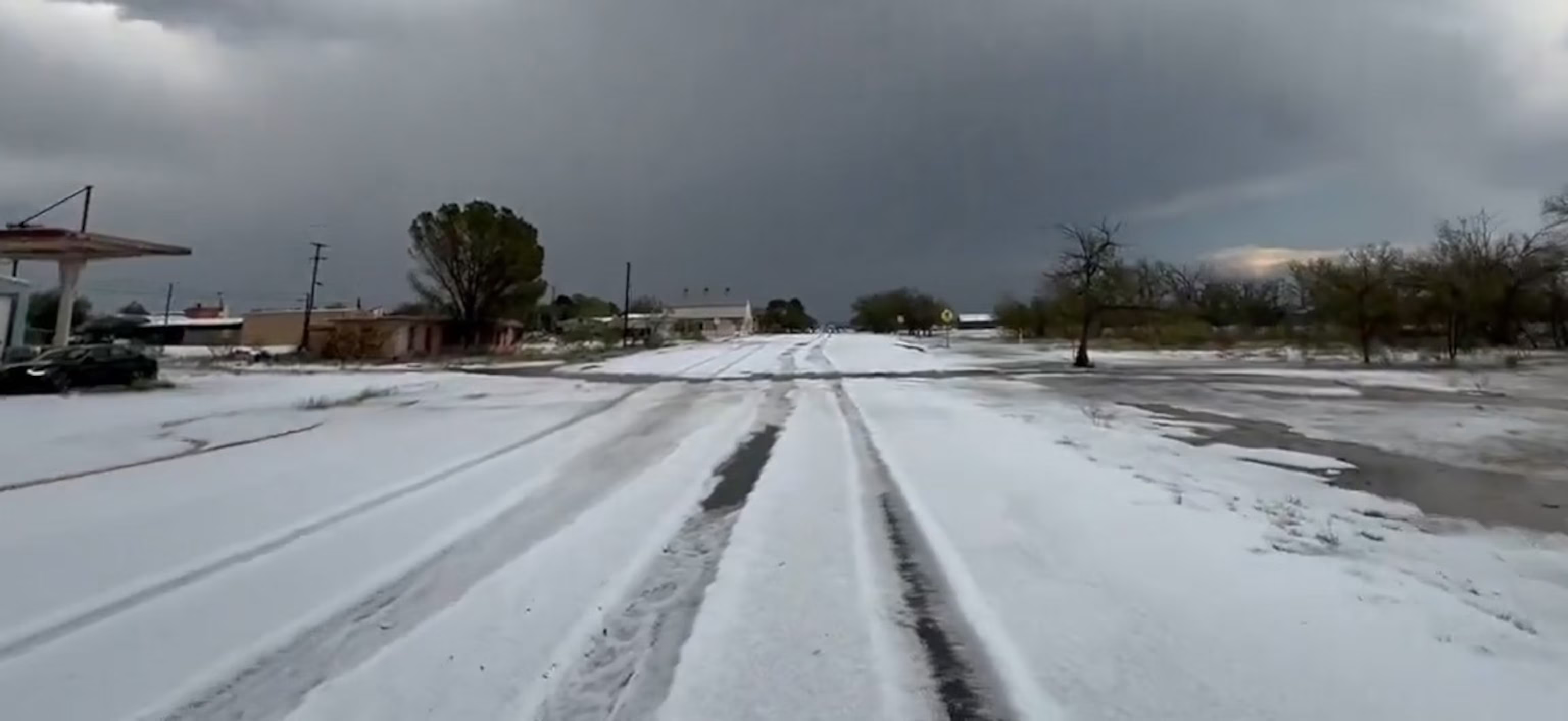As severe weather continued to impact the Great Plains on Thursday, residents of a town in West Texas experienced a dramatic weather event on Wednesday.
The town of Marathon reported a significant temperature drop and hail accumulation so deep that snow plows were needed to clear the streets.
The temperature in Marathon plummeted by over 50 degrees on Wednesday afternoon, dropping from around 105 degrees to the mid-50s within about an hour.
Brian Curran, a meteorologist with the National Weather Service in Midland, Texas, explained to ABC News that this sharp decline was caused by a severe hailstorm that struck the area.
Curran likened the phenomenon to an air conditioner effect. Brad Wilson, chief of the Marathon Fire Department, told ABC News that the weather shifted dramatically from summer-like to winter-like conditions in just an hour.
“There was about two feet of hail on our main street right in the center of town. It looked like snow,” Wilson said, adding that they measured the accumulation before road crews arrived to clear the streets.
In addition to the hail, the town recorded approximately 2.5 inches of rain in an hour on Thursday, according to Wilson.
Typically, hail occurs in warmer seasons when heat during the day leads to thunderstorm formation. Updrafts in these storms push supercooled droplets to the top of the cloud, where they freeze. Hailstones circulate within the cloud until they grow heavy enough to fall to the ground.
Curran noted that such temperature swings are not uncommon in Texas and can sometimes be even more extreme.

For instance, in February 2022, Austin experienced a temperature drop from 88 degrees to 32 degrees within 24 hours, marking the largest temperature swing ever recorded in the city’s history.
The most significant temperature swing in U.S. history occurred on January 14-15 in Loma, Montana, where temperatures rose 103 degrees in 24 hours, according to the National Oceanic and Atmospheric Administration.
Over the Memorial Day weekend, severe storms claimed at least 20 lives across Texas, Oklahoma, Arkansas, Missouri, and Kansas, according to state officials. At least 25 tornadoes were reported across these states during the holiday period.
In Valley View, Texas, about 60 miles northwest of Dallas, severe weather, including several tornadoes, resulted in seven fatalities and over 100 injuries on Saturday night.
Texas Governor Greg Abbott declared disaster statuses for 106 counties, noting that over 200 homes or structures were destroyed and an additional 120 damaged statewide.
This week’s storms left over 600,000 Oncor customers without power, with the utility company reporting that it had restored service to more than 480,000 customers by Thursday afternoon.
Further severe weather and heavy rain are forecast for most of Texas and southeast Colorado on Thursday afternoon, with cities from Lubbock to Abilene and San Angelo at risk of large hail, damaging winds, and isolated tornadoes.
Several flash flood warnings were also issued on Thursday, including north of Dallas and in New Orleans.
On Friday, the severe weather threat is expected to shift slightly eastward, affecting much of central and southeastern Texas and the Lower Mississippi Valley.


